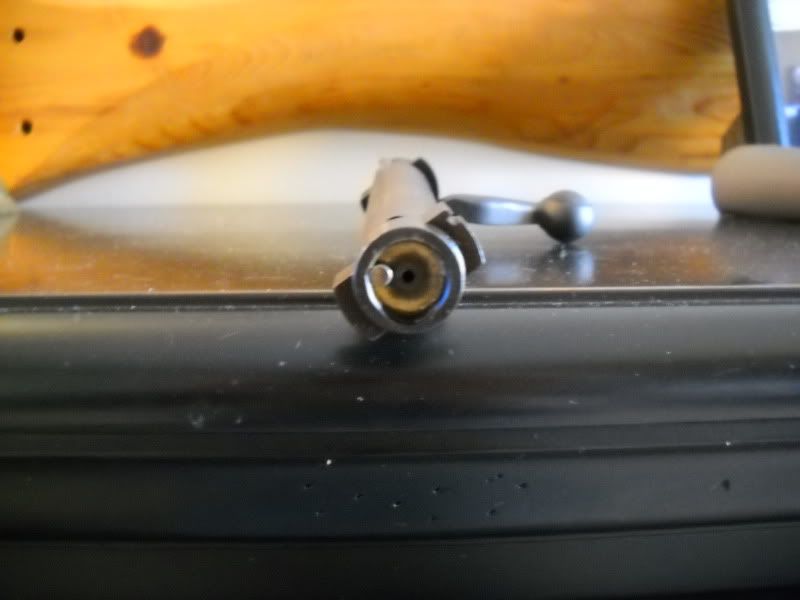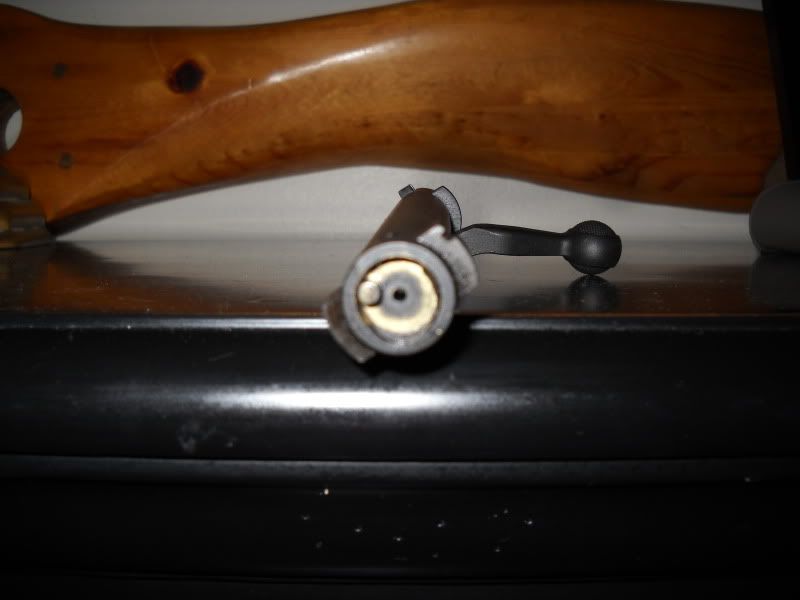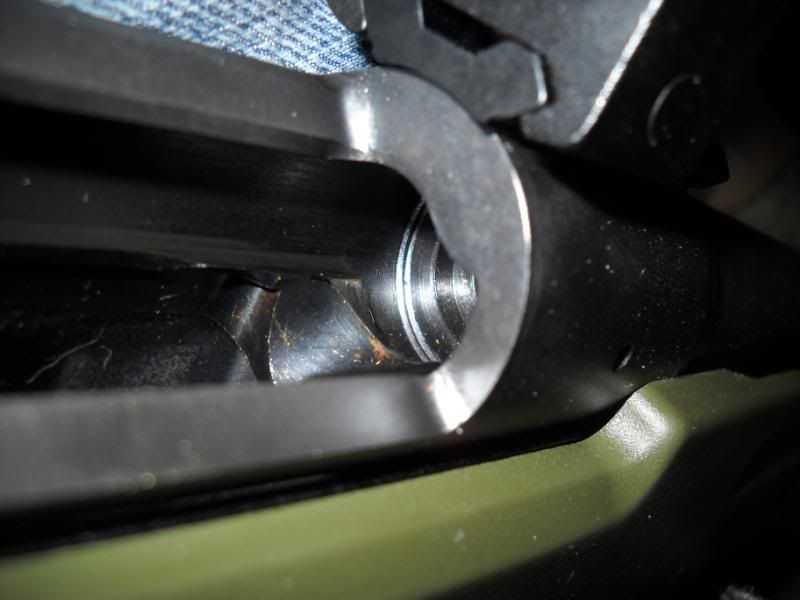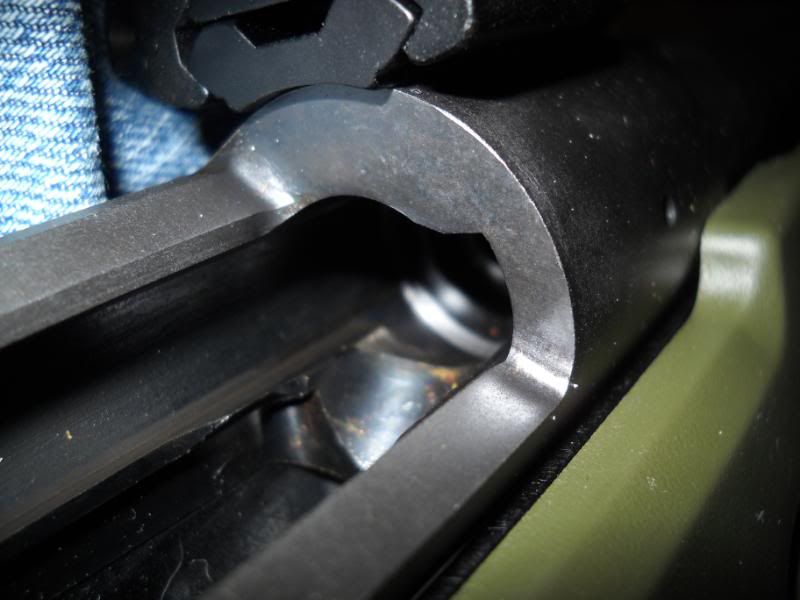Hey all, I need some advice from all you 'smiths out there.
I bought a Remy 700 SPS from Cabela's 2 nights ago, and when i took it to the range yesterday and noticed a couple things that I'm worried about.
First off, Like I said:
Remington 700 SPS Varmint /.308
AICS, not torqued down because my torque wrench is MIA
40 rounds of 168g FGMM down the tube, so not exactly broken in
Here's the problem, one of the first things I noticed when loading was that, while not impossible, the bolt is pretty hard to close and open. When I had run through a few rounds, I noticed that the brass was getting shaved a little bit. When I got home, I took the bolt out to clean, and this i what I found:


There is quite a substantial ring of brass around the bolt face, especially for only 40 rounds. needless to say, I'm a little concerned. Also there were brass shvings in the chambers, here.


So what do you guys think, should I send it to the repair center, or is it something like it's just new and will cure itself? I've never had another rifle do this, at least not as bad as this one. Thanks for the input, Taylor
I bought a Remy 700 SPS from Cabela's 2 nights ago, and when i took it to the range yesterday and noticed a couple things that I'm worried about.
First off, Like I said:
Remington 700 SPS Varmint /.308
AICS, not torqued down because my torque wrench is MIA
40 rounds of 168g FGMM down the tube, so not exactly broken in
Here's the problem, one of the first things I noticed when loading was that, while not impossible, the bolt is pretty hard to close and open. When I had run through a few rounds, I noticed that the brass was getting shaved a little bit. When I got home, I took the bolt out to clean, and this i what I found:


There is quite a substantial ring of brass around the bolt face, especially for only 40 rounds. needless to say, I'm a little concerned. Also there were brass shvings in the chambers, here.


So what do you guys think, should I send it to the repair center, or is it something like it's just new and will cure itself? I've never had another rifle do this, at least not as bad as this one. Thanks for the input, Taylor


